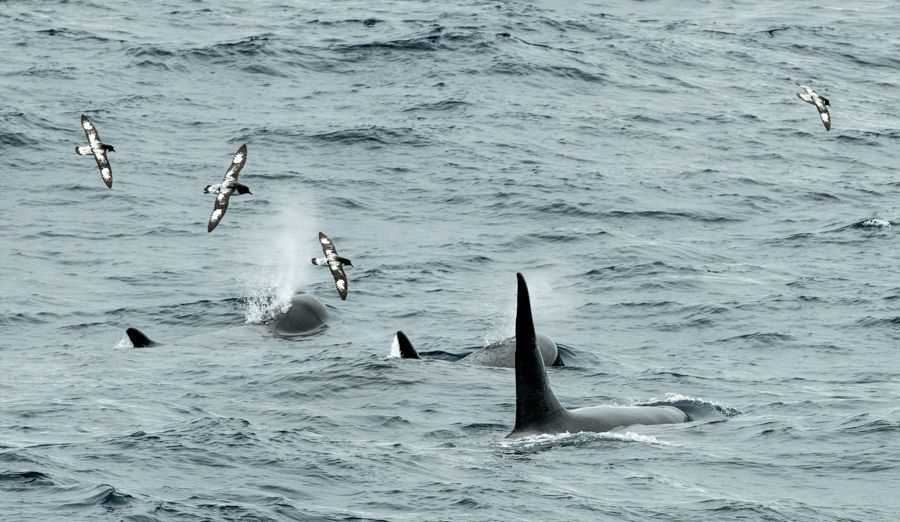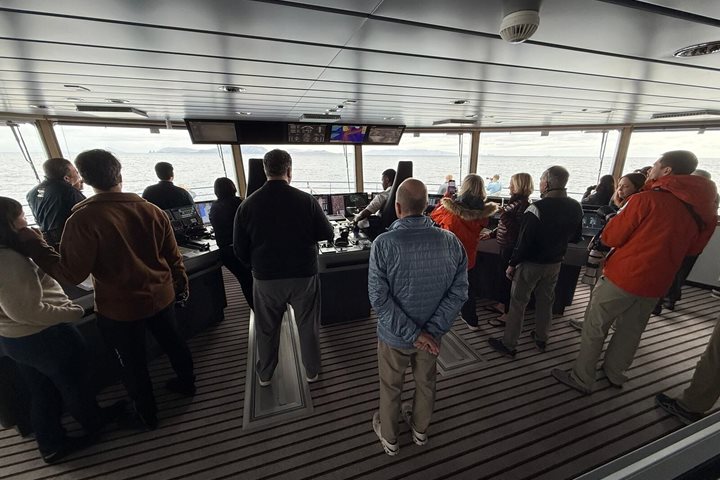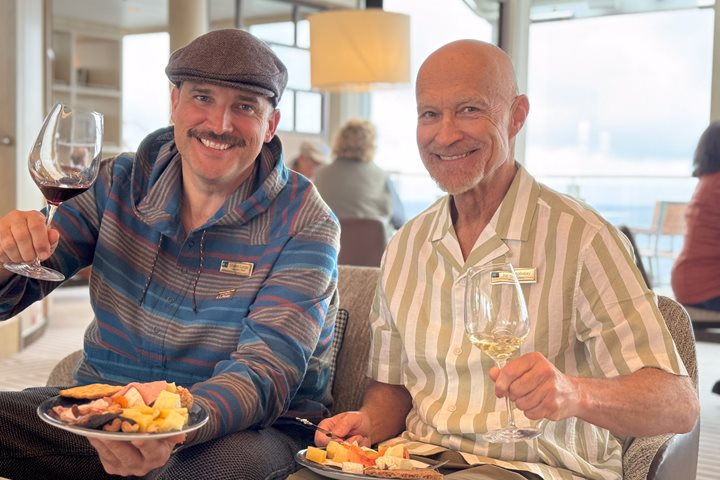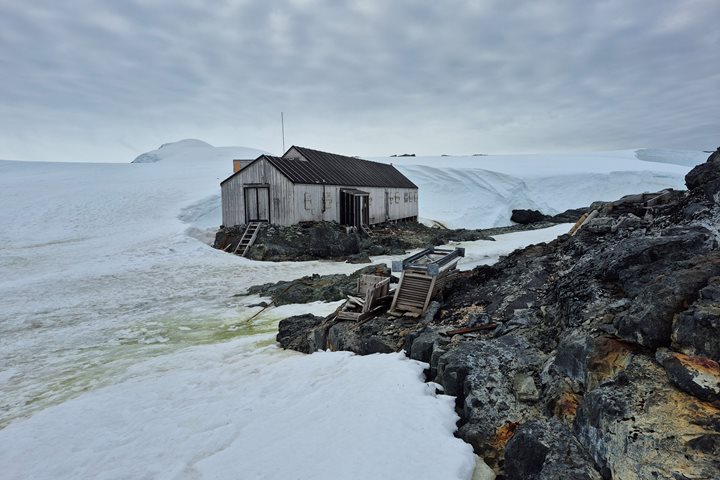South we go, into the realm of ice and sea.
After a full day crossing the Drake Passage, the rhythm of the Southern Ocean has changed. A heavy swell from our starboard has swung around to a following sea, pushing us ever further south. By midmorning on our second day at sea towards Antarctica, whales began to surface around the ship. Fin whales – 70-foot-long behemoths – exhaled into a column of condensed air that lingered on the water’s surface within 200 meters of our ship. Albatross continued to drift behind us, hugging our vessel’s slipstream.
With Elephant Island, our first destination of the trip, in sight, a pod of the planet’s most elusive killer whales was spotted just off our bow. Type D killer whales are oceangoing creatures that have a poorly understood life history because of the amount of time they spend in the tempestuous body of water we had just crossed. Little is known about their preferred diet, vocalizations, or social structure, yet we felt their presence on the ship today because of how rarely expedition vessels like ours have seen them over the years.
These special animals were the welcoming party to our afternoon of exploration along the coastline of Point Wild, Elephant Island. This stretch of exposed, glaciated coastline was home to none other than the men of Sir Ernest Shackleton’s Imperial Trans-Antarctic Expedition. For four months in the winter of 1916, 22 of Shackleton’s 28 men survived on seal and penguin meat while awaiting rescue from “The Boss” himself. In an effort to gain even a faint appreciation for what these men were up against, we took to Zodiacs this afternoon for a cruise around the spit of land that sheltered these lost souls. Leopard seals, chinstrap penguins, and heavy surf were all that greeted us today, but they have given us a measurable taste of the landscape that lies ahead!







